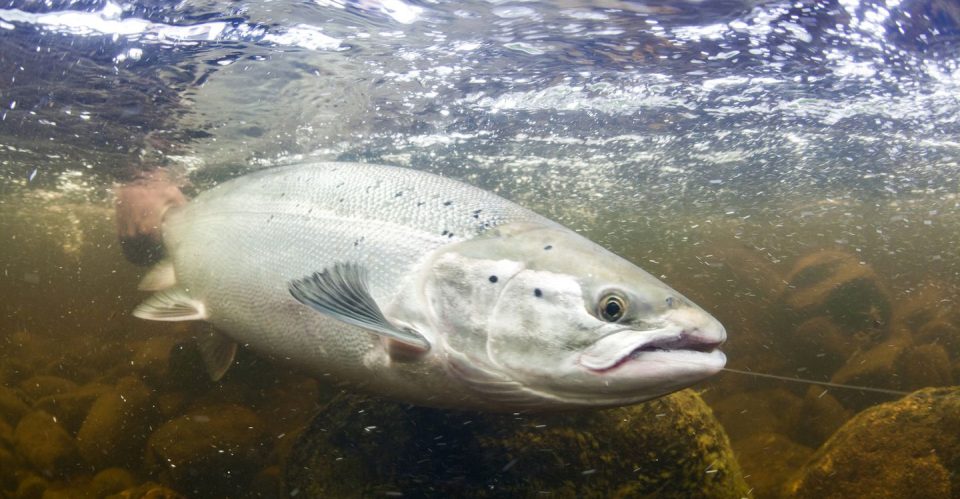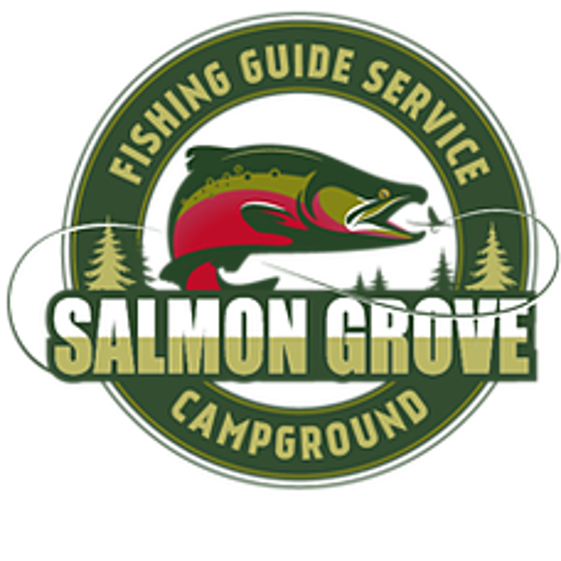King (chinook) Salmon Fishing
Largest of the Pacific Salmon
COPPER RIVER KING SALMON CAN REACH OVER 70 POUNDS!
King salmon (Oncorhynchus tshawytscha), also known as Chinook, are the largest of the Pacific salmon. King salmon fishing on Class III+ whitewater rivers is some of the most exciting and adventurous fishing around. Kings are known to “bite” and will be aggressive toward artificial lures, yarn, streamer flies and our favorite freshly cured king salmon roe. The Copper River king salmon we catch in the Upper Copper River Basin average around 30 pounds.
A THRIVING KING SALMON FISHERY
The Copper River supports a healthy population of king salmon, the sport-fishery is managed by the Alaska Department of Fish and Game. The ADF&G has made a serious effort to monitor the escapement numbers of king salmon entering and migrating up the Copper River system to spawn. Learn more about the Copper River king salmon and the states effort to manage the fishery at the ADF&G website.
King Salmon Fishing Tips & Tricks
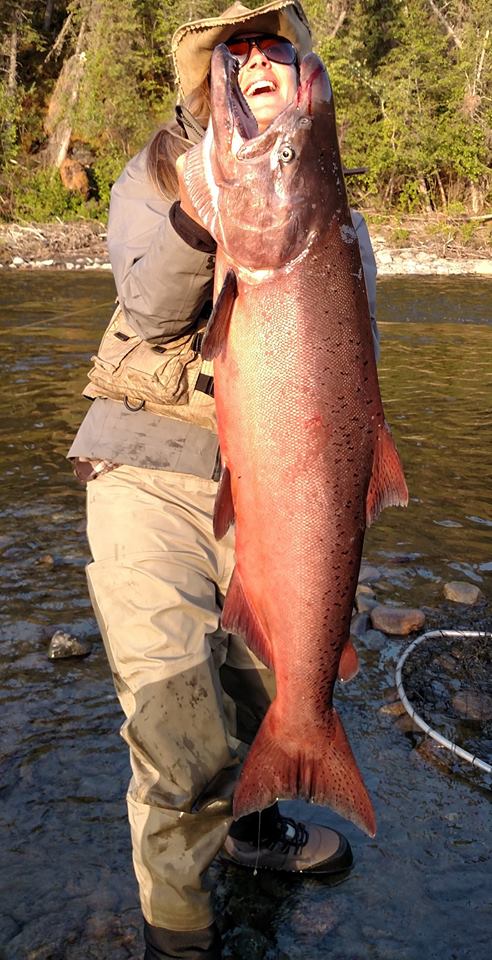
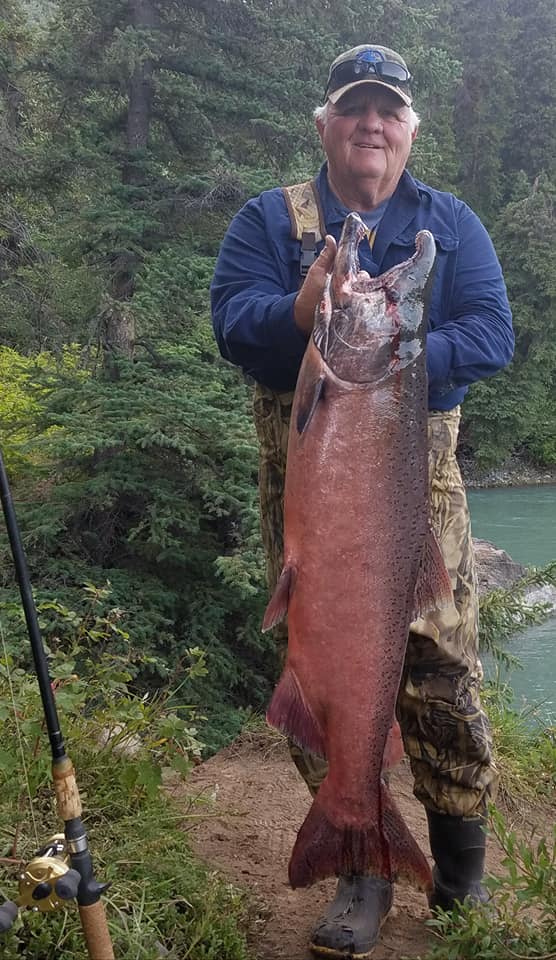
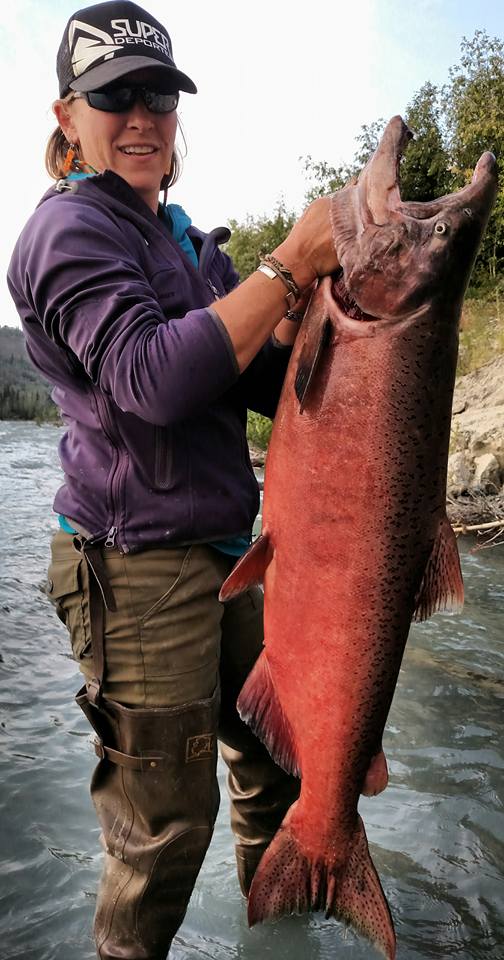
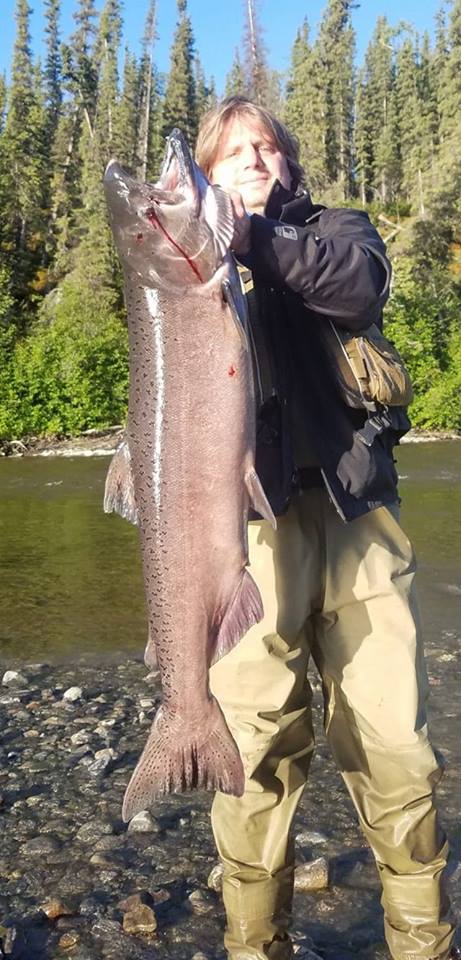
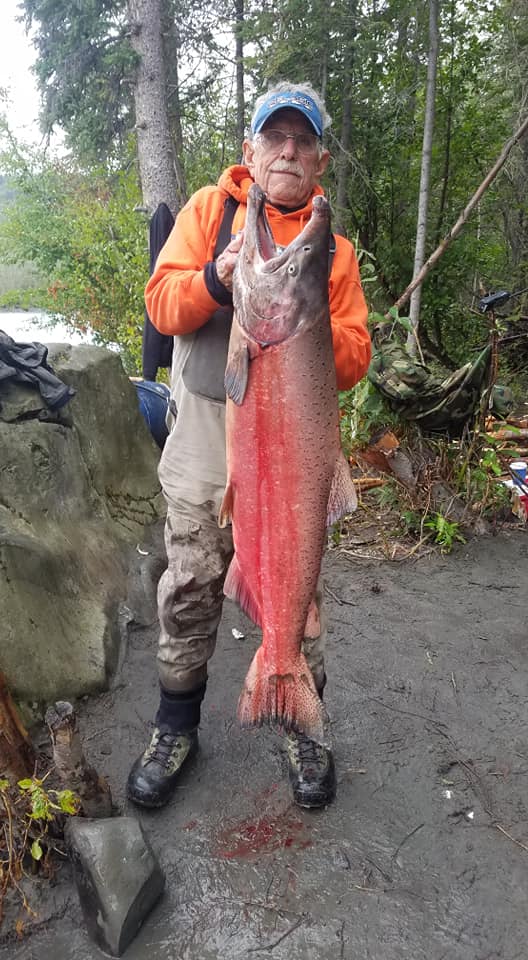
Drift Fishing For King Salmon
Side-drifting is the most common technique we use to fish for Copper River king salmon on the swift-moving rivers throughout the Upper Copper River region of South-central Alaska. Drift fishing is done from a stationary point. The angler casts slightly upstream, allows the lure to sink to the bottom, removes any slack, and then allows the line to drift down through the hole. Once the current carries the line directly downstream, the force of the water will pull the hook off the bottom and the angler needs to reel in and start the drift procedure over again. It is important to apply the correct amount of weight when drift fishing for king salmon (hollow core 1/4″ lead 1/2-2 oz.) The correct amount of weight on your line allows the rig to bounce along the bottom, lightly tapping as it drifts down matching the speed of the river’s current. More weight will slow down your drift and less weight will speed up the drift. The strategy is to systematically cover the entire area that you are fishing by starting at the top of the hole and working your way down. You can achieve this by making a few short casts followed by a few long casts, working your way down the run. With a few good casts and some practice, you can begin to feel each rock as the lead tumbles downstream. Anything that feels different could be a fish and sometimes all you will notice is that the lead stops moving down river with the current. When your lead stops it can only be 1 of 2 things: a snag or a fish! Best to set the hook either way because if it is a snag you may be able to pull off before losing all your gear. If it is a fish you should get a good hook set. Always set the hook!
Float Fishing For King Salmon
Float fishing is a technique that can be used to catch king salmon when there is no current to drift fish. Float fishing works very well in large eddies, lakes, back channels and sloughs with little to no movement. Float fishing can be done along some eddy lines with current but requires the angler to tend the line periodically and strategically manage the line slack. To catch a king salmon on a float rig the angler needs to cast the line out and manage the slack. The angler may have to reel in or even let some line out depending on the current and water that needs to be covered. The float should be at the surface of the water and watched closely for a strike. Once a big king salmon takes the bait the float will get pulled underwater and that’s when it’s time to set the hook! It is pretty exciting watching your bobber go down.
Plunking for king salmon
When the rivers are high fishing becomes extremely challenging. The water becomes cloudy with silt and runoff. Fishing guides discovered that plunking can work to catch king salmon when nothing else will. Plunking is similar to drift fishing but the bait is meant to remain anchored to the bottom in one spot. Plunking is not a way to cover a lot of water or work a run but it can work to hook fish that are passing by the bait in very cloudy water. When using the plunking technique, the angler ties on a very heavy weight and casts into a deep slack water holding area, allowing the weight to sink to the bottom and rest in one place. The fishing rod can now be put into a rod holder if the angler wishes. The idea is to leave the gear alone until a fish picks up the bait! Be sure to keep a close eye on your rod if you do put it into a rod holder because you still need to set the hook so your king salmon doesn’t get away.
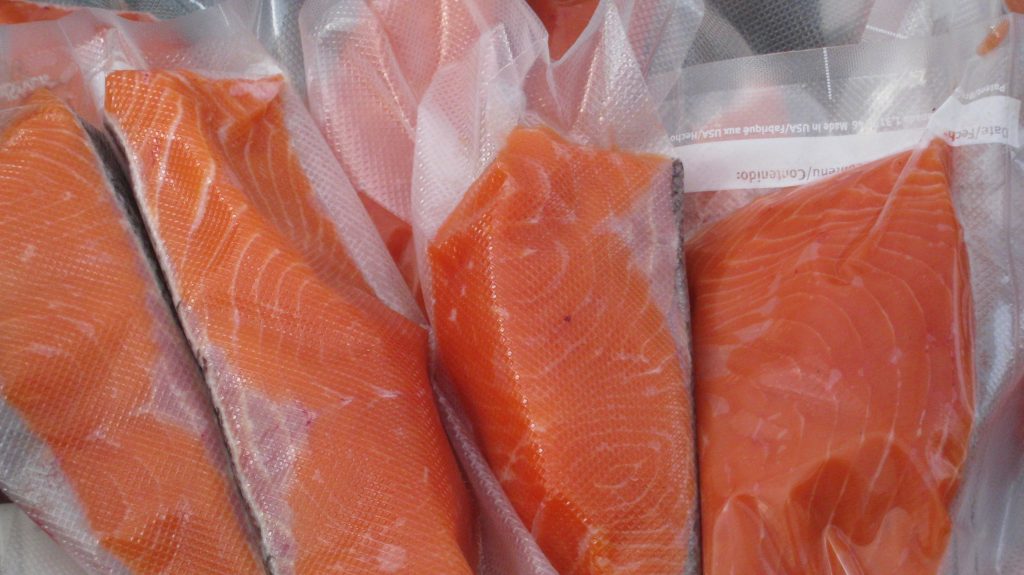
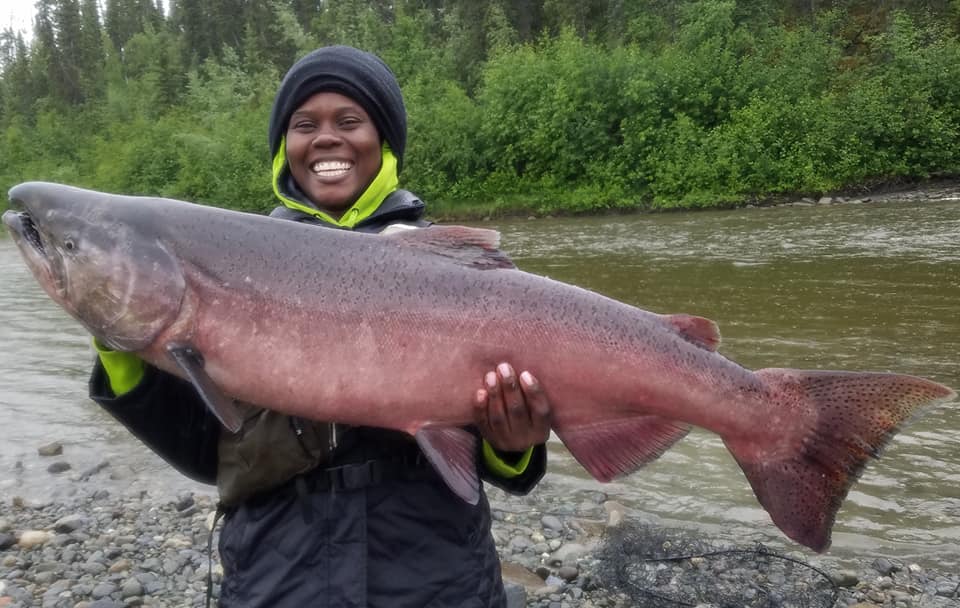
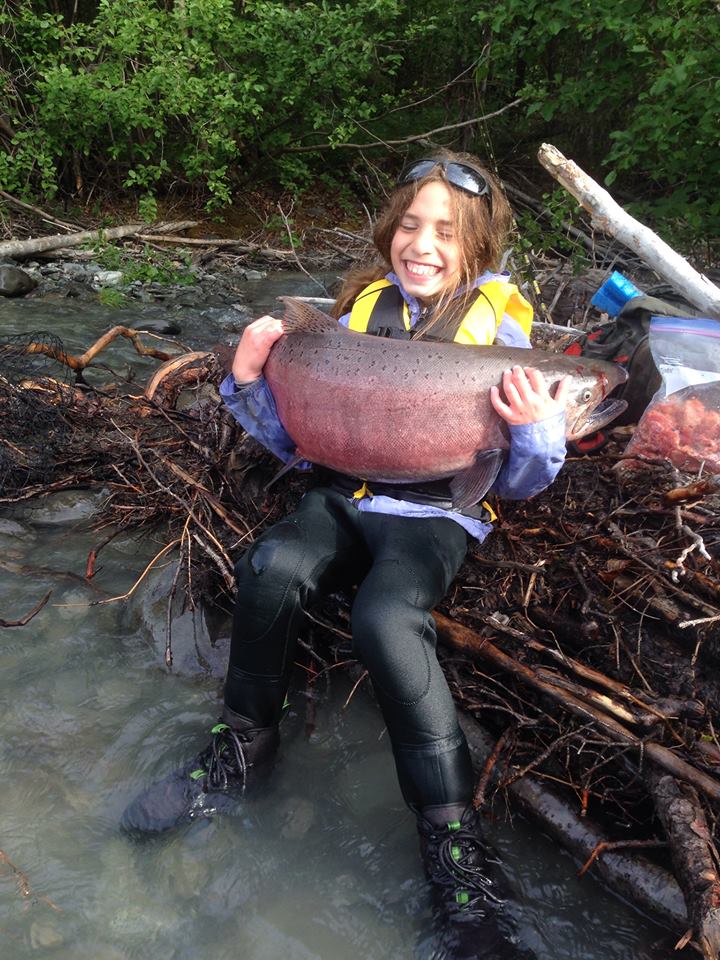
Want to know more…keep reading!
Once you have decided the technique you will use to catch these mighty Copper River salmon and have selected your king salmon fishing rod the next step is to find where the king salmon are in the river. King salmon like to hold in the deepest slack water they can find. Sometimes this slack water is easy for us to see and sometimes it takes a trained eye. Slack water can be obvious when it’s defined by an abrupt eddy line or calm spot behind an island. It can also be harder to recognize when the deep slack water is in the middle of the river and formed by a submerged object such as a rock or underwater gravel bar. With some practice, you will be able to read the water and see where the salmon are in the river
CASTING FOR KING SALMON
Once you have chosen a location that is holding water for king salmon, the next step is to cast. Pick a spot that is comfortable and has good footing. Position your hips slightly downstream and take a wide stance. Next, look at the water and decide where you want to cast and how you want your line to drift. Pick a spot that is slightly on the main current side of the hole you are fishing so your line starts to drift across the run. This gives your line time to sink to the bottom before it passes in front of you. Now you can follow the line with the tip of your rod, focusing on the drift.
DRIFTING FOR KING SALMON
Whether you are side drifting or float fishing, now is the time to keep a tight line by managing any slack in the system. Focus on keeping the tip of your fishing rod right on top of the fishing line and move the rod downstream with the line to follow the drift. You will be able to feel the bottom (side drifting) as the weight tumbles along the river bed. Pay attention to anything that feels different. Give the rod a short firm tug directly upward if you feel the weight strip bouncing. If the weight stops moving you have a snag or a fish! With some experience, you will be able to tell when you have hung up on the bottom and when you have a bite. When in doubt set the hook!HOOK
SET THE HOOK
When you get a bite be sure to set the hook! Keeping a tight line during the drift will help ensure you get a good hook set when the king salmon decides to bite. If you have too much slack in the system it is possible to miss bites due to the inability to feel anything on the end of your line or the fish may take the bait too deep and end up getting hooked in a gill. The thing to remember is a tight line will help you set the hook.
A FIGHT YOU WON’T FORGET
Now that you have a king salmon on your line, it’s important to make the right adjustments to your fishing rod so you don’t lose the fish. Double-check your footing and get into the fighting stance. Wait a second before doing anything to see what the fish does so you can react accordingly. If your fish starts to run down-stream you must avoid getting spooled. To stop a fish on the go keep your rod under tension and put the guides directly upstream, lowering the rod and positioning the tip under the water. This maneuver does 2 things: turns the fish’s head upstream so you can get the king salmon back into the hole and keeps the fish close to the bottom. If you pull straight up it will cause the fish to panic run so keep your rod low when you hook a big fish in a fast-moving current.
LAND YOUR TROPHY KING SALMON
Make sure to take your time and move slowly at the end of the fight. The best way to net a king salmon on a swift river is headfirst from downstream and on the first try. When you are fishing with Salmon Grove we will always be ready with the net!
Purchase your Alaska Fishing License Online

Purchase your Alaska Fishing License Online from the state’s secure website
Find the current fishing regulations
